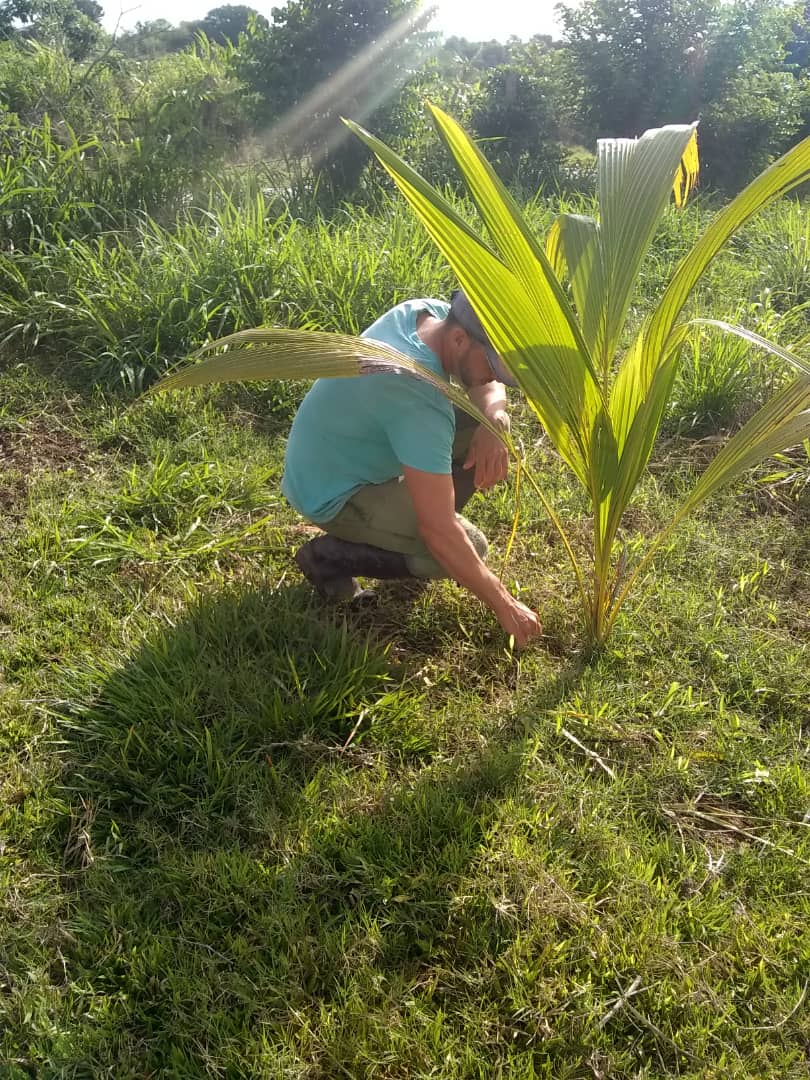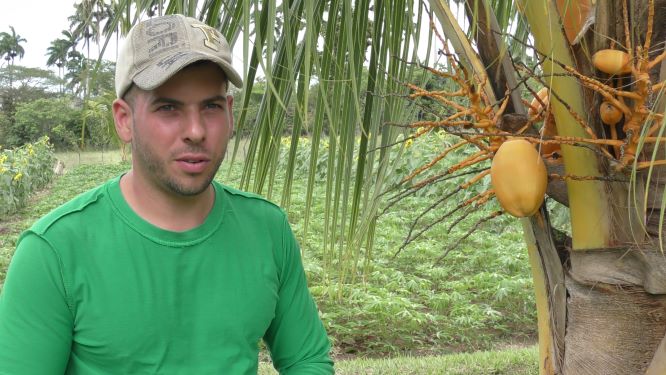With the eyes of an artist, Javier Bravo Rojas observes his farm La Idalia ―at the foot of the section of the Bamburanao mountain range that crosses the territory of Chambas, right in the Rincón de Mabuya― and imagines shapes and colors that later shape his hands and those of his family.
A farm, he comments, is like a painting because it also conveys ideas; It is organized and through work productions are achieved that express the thoughts and way of life of one or several individuals, who require a special art to tend the crops.
It is the vision of the 29-year-old who decided to abandon his duties as an Art Instructor, specializing in Plastic Arts, to dedicate himself entirely to tilling the land, thus becoming the continuator of a 200-year-old family tradition, started by his great-grandfather when he arrived in Cuba from Spain.

He is passionate about his career, working with children and landscape snapshots -the latter only captured with the depth of his gaze due to the lack of a camera-, but he also reveals an interest in agriculture and livestock, from lessons received since childhood, when he accompanied his father.
La Idalia, attached to the Manuel Montaña Credit and Services Cooperative, is dedicated to various crops (meats, fruits and vegetables) and livestock (pigs and cattle), the former destined for social consumption, while the latter is limited to family self-sufficiency.
However, he explains, he plans to create conditions to encourage animal husbandry and join forcefully in pig and livestock production, including the delivery of milk and meat, in order to contribute more comprehensively to the Food Sovereignty and Education Program. Nutritional.

Determined to turn that space into his life's work, four years ago he undertook transformations, stimulated by his creativity, the lessons of his father and grandfather, and the knowledge acquired at the Rincón Los Hondones Farm School with a Landscape Approach, linked to the project International Connecting Landscapes.
• Read the report Rincón Los Hondones: science in the "madness"
It is committed to sustainable development by using agroecological techniques, including organic fertilizers (animal waste, crop residues), the intercropping of crops, the use of living barriers to repel pests and the use of oxen for land preparation.
He acknowledges the influence of Osveldo Gómez Reina and Ana Elsy Guerra, owners of the aforementioned school farm and professors of the Agronomy career at the Municipal University Center (CUM) of Chambas, who insisted on the importance of using biological means and grow fruits.
Learn the benefits of efficient microorganisms for agriculture, a technique developed by the Japanese scientist Teuro Higa, who will reveal the presence in forests and the benefits of around 80 species, of about 10 genera, belonging to four groups (photosynthetic bacteria, actinomycetes, lactic acid producers and yeasts).
These, he points out, decompose organic matter and increase the availability of soil nutrients, inhibit the growth and development of harmful species that inhabit the land, have hormonal effects that promote crop development, degrade toxic substances and improve quality from the earth.
The shortage of inputs for agriculture did not surprise him because for years he has applied biological products and, therefore, he bought in quantities to store and have available, despite the fact that some called him “crazy” for acquiring Nicosave and Turisave: “they asked me why did he buy that ‛syringe water,'” he recalls.
Although in crops such as grains, the lack of technological packages has an impact on yields; agro-ecological practices demonstrate their effectiveness in improving soil quality, phyto-sanitary care and the development of plantations.
The results in vegetable harvests are incredible, so that in 2021 he delivered to the Collection Company about 8 quintals of chard and two of lettuce, in addition to considerable amounts of radish, cucumber, peppers, capsicum, and melon.
Likewise, during the critical period of the COVID-19 pandemic in the territory of Ciego de Ávila, donations of these productions and of meats, fruits, grains and tomato paste were made to Public Health institutions, including isolation centers for suspected patients and positive for the SARS-CoV-2 virus.

His future, he says, is on the slopes of that hill and the greatest challenge is to "paint" the countryside with a diversity of crops and livestock, which requires great efforts to achieve sustainability, with new opportunities that ensure family support, health care, to the animals and the permanent progress of the farm.
The "table" of La Idalia seems well outlined when contemplating alternative foods for pigs, cattle and chickens, such as cassava and sweet potato yogurts, the feed obtained from the dehydration of root vegetables and the subsequent milling with sunflower seeds.
With the daring that defines him, he crosses between different breeds of pig, in search of a more resistant one, that develops in a natural environment, less sensitive to diseases and capable of taking advantage of natural resources for nutrition.
Javier could have been a great painter, but he decided for the art of agriculture, with all the commitment and inspiration, that's why he chose to become an agricultural engineer and was happy on social networks after his first day of classes at CUM.
He proudly shows his hands, hardened by forced labor; the oil does not stain them, they only have the nuances of the earth.





